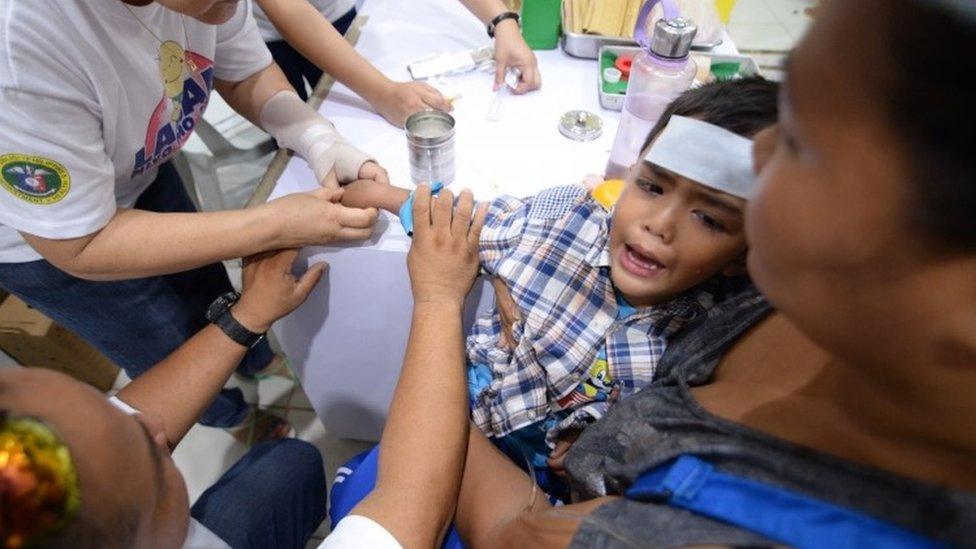Philippines declares dengue epidemic as deaths surge
- Published

Most cases of severe dengue fever occur in children, such as this boy treated in Cabatuan, Philippines last month
The Philippines has declared a "national dengue epidemic" after at least 622 people lost their lives from the mosquito-borne disease this year.
At least 146,000 cases were recorded from January to 20 July - a 98% increase on the same period last year - the health department said.
The epidemic was declared so that officials can identify areas in need of emergency attention.
The infection causes flu-like illness, but occasionally becomes more severe.
, according to the World Health Organization (WHO).
The Philippines declared an initial "national dengue alert" in July.
One Filipino mother's worst fears were realised when her unvaccinated children caught measles
" in these areas to identify where a localised response is needed, and to enable the local government units to use their Quick Response Fund to address the epidemic situation," Health Secretary Francisco Duque said in a statement.
Western Visayas had the most recorded cases with more than 23,000, with significant outbreaks also in Calabarzon, the Zamboanga Peninsula and Northern Mindanao.
Seven regions have exceeded epidemic levels for three consecutive weeks.
Fears over a dengue vaccine led to a big drop in immunisation rates in the Philippines for preventable diseases, officials warned last year.
Concerns were triggered over Dengvaxia, the world's first vaccine against dengue, after 14 children died out of more than 800,000 inoculated in 2016-17.
Sanofi, the French developer of the vaccine, and local experts said there was no evidence linking the 14 deaths to the drug.
Dengue fever affects more than 400 million people each year around the world, most of them in tropical or sub-tropical zones. Most cases of severe infection are detected in children.
Symptoms can include a fever, pain behind the eyes and a red rash. and pass off in about a week.
- Published4 December 2017
- Published3 February 2018